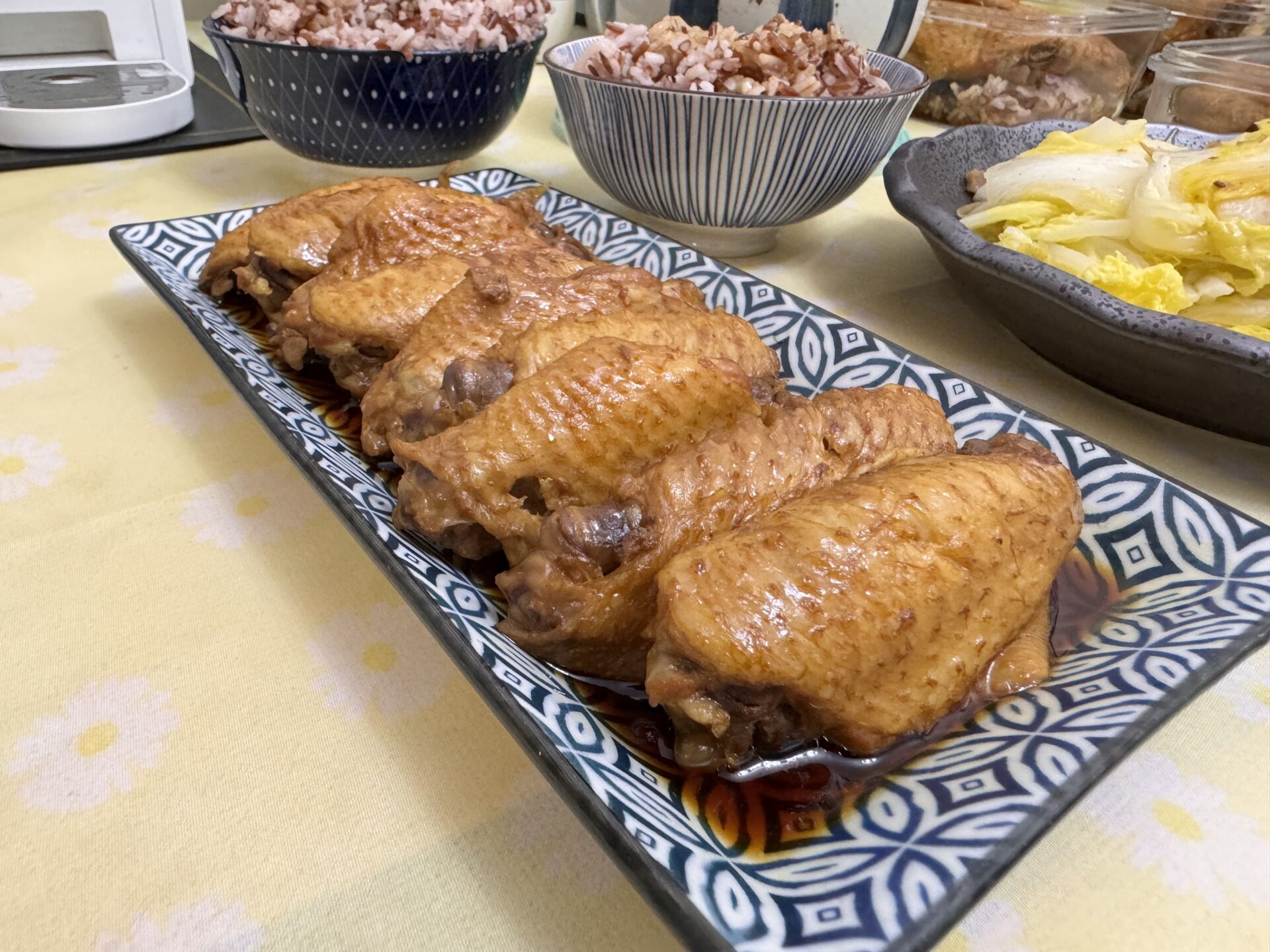This chicken wing stew is easy and meal prep friendly, and it has absolutely nothing to do with Switzerland. Read on to learn about a recipe born from colonial Hong Kong.

Time: 4/5
Lots of simmering time.
Effort: 3/5
Wouldn’t be much work at all, if it wasn’t for the pre-blanche.
A Delicious Misunderstanding
In spite of the name, Swiss Wings have nothing to do with Switzerland. Instead, it’s the product of a distinct cultural phenomenon that emerged from colonial era Hong Kong – “Soy Sauce Western” cuisine, where Western food was (heavily) adapted to suit Chinese tastes, using locally available ingredients.
Nobody knows how the curious name came to be, but legend has it that a foreign patron asked the Chinese waiter about some chicken wings stewed in sweet soy sauce. The waiter said “sweet” but it came out sounding like “Swiss”, and the name stuck.
It has since become a staple of comfy Cantonese home cooking, the kind of dinner that kids look forward to after a long day at school and a muddy afternoon on the football pitch.
And there’s no wonder why it’s part of every Cantonese mom’s repertoire. The recipe involves simple ingredients, straightforward execution, and delicious sweet and savoury chicken wings that go great with rice.

The sauce makes or breaks a dish of Swiss wings. At its core, it’s good soy sauce plus plenty of sugar, enough to make it straddle the midpoint between savoury and sweet. The sugar also thickens the sauce, which in combination with the connective tissue from the wings make the sauce unctuous and lip smacking good.
Since the recipe uses a lot of it, the type of sugar makes a difference to the final product. I like using slab sugar, but rock sugar is also a good option. White sugar works in a pinch, but you’d be missing out on some of the more complex flavours of less processed sugars.
Beyond that, you can add any spices and herbs you like. Each family has their own secret ingredients, so there are no wrong answers. The way I learned it, the sauce gets reinforced with some ginger, cinnamon and bay leaves. Long time readers may recognise that the list of ingredients are very similar to Lo Sui master stock (for braising beef shanks and other delicious things), and you can indeed use a batch of Swiss wings to get a master stock started.
As for the actual cooking, the process is the same as with any Chinese braise. The proteins get pre-blanched to get rid of some of the gunk and keep the sauce clear, before being simmered low and slow until tender.
I do the second stage in my vacuum pot, which turns the simmer into an entirely passive process that I can safely leave unattended. I use it to make low effort meal preps like Bak Kut Teh, Pork Adobo, lamb shanks, and Beef and Guinness Stew.
But this recipe is just as doable in a more traditional pot-over-stovetop arrangement. Whichever method you use, make sure to use a big cooking vessel because you’re going to want to make as big of a batch of these Swiss wings as you can.

Posts since the last recipe that was actually served with rice: 0
Dramatis Personae
Served 8.
- 4lb chicken mid joint wings
- 1-2 sticks of cinnamon
- 4 bay leaves
- A few slices of ginger
- 10tbsp light soy
- 5tbsp dark soy
- 80g slab sugar
Also served with about 2000g of Napa cabbage – always eat your veggies!

Executive summary
- Put chicken wings and ginger in a pot, then cover with cold water. Bring the pot to a gentle simmer.
- After a brief simmer, drain the wings and give them a rinse. Return chicken and ginger to a cleaned pot.
- Add all the other ingredients except the sugar, then bring the pot to a simmer again.
- Cover and simmer for about 45 minutes, or until chicken wings are tender. In the meantime, make rice and cook vegetables.
- Once chicken wings are cooked through and tender, add sugar to taste.
- Serve over rice, with plenty of sauce. Let any extra sauce cool down and freeze it for future use.
Play by Play


The chicken takes the longest so let’s begin with that. Begin the pre-blanche with cold water, and bring to a simmer.


Once it’s at a simmer, the pre-blanche is done. Clean the wings and the pot.


Everything else goes into the pot except the sugar, and I brought it back to a simmer. If there isn’t enough liquid, top it off with some water – but be conservative, the wings will let out water too.

Into the vacuum pot it goes, where it will be kept at near-boiling temperature for about an hour. Nighty-night!

I got the rice cooker going and started washing the Napa cabbage during the downtime. The bottoms need more time to cook than the tops, so I like to separate the two parts.


It always looks like there’s too much vegetables until they cook down. Victory will go to those who persevere.

Now that the chicken is done, I stirred in the sugar. It’s supposed to be pretty sweet, almost as sweet as it is savoury.

And there we go! A homey, comfy meal to delight all ages.

And all this extra sauce can go into the freezer to await a future braise.Do this a couple of times, and you’ll be amazed by how the sauce evolves!
Thanks for subscribing! See you around.
Keep browsing by categories, or by tags:
Beef Blog Broccoli Cabbage Carrots Cast iron Cheese Chicken Curry Dashi Date Night Dried scallops Dried shrimp Eggs Fish and seafood Garlic Ginger Glass noodles Gochujang Honey Miso Napa cabbage Onion Oven Pasta Pork Potatoes Salmon Sesame oil Shiitake mushrooms Shrimp Soup Sous Vide Steaming Stewing Stir fry String beans Sweet potatoes Teriyaki Tofu Tomatoes Vacuum cooker Vegetarian Yogurt Zucchini
